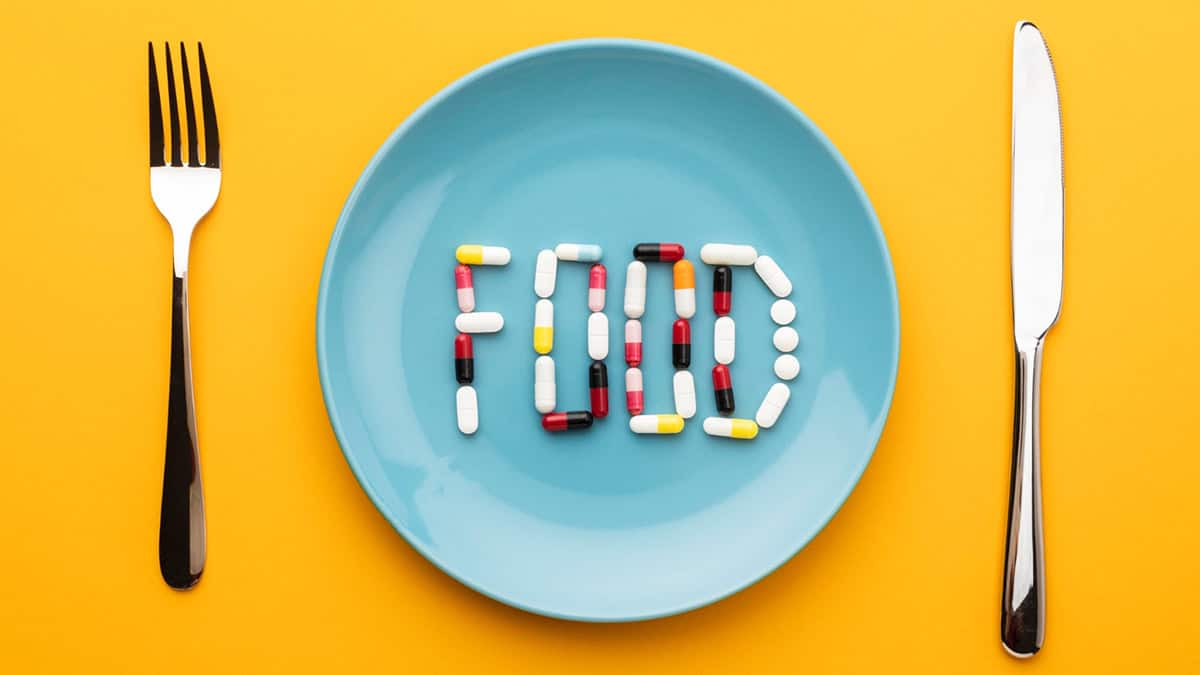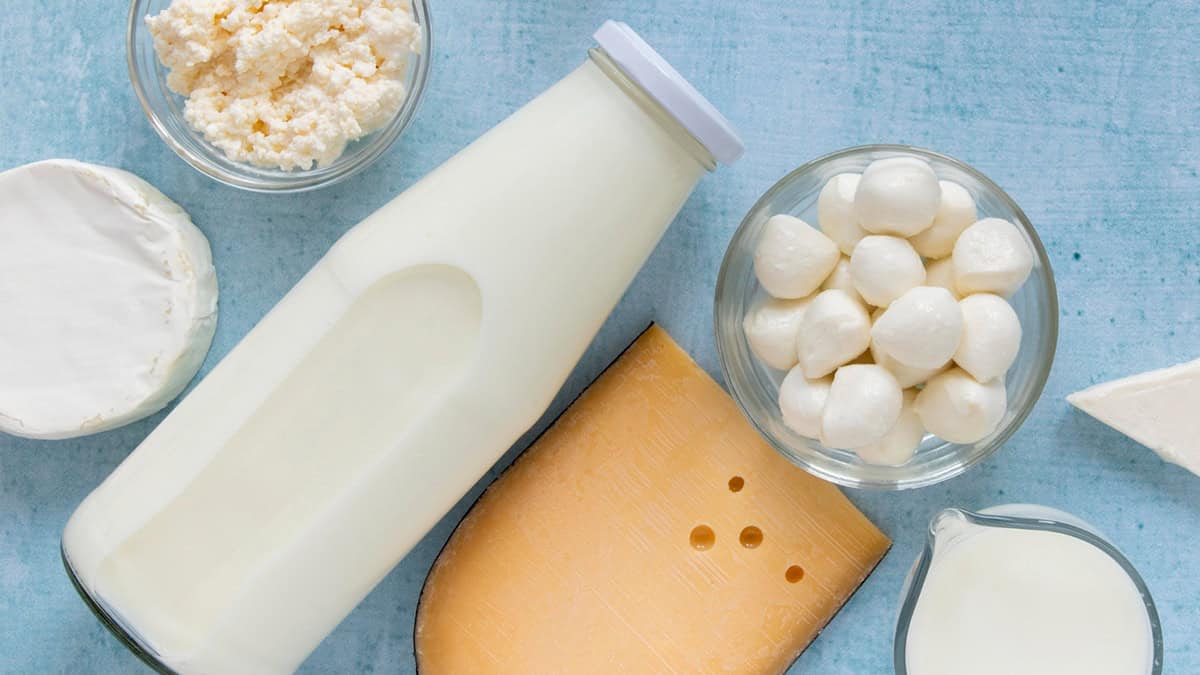Foods to Avoid While Taking Xifaxan + Xifaxan FAQ
speciality medications

For people who are prescribed Xifaxan, it’s important to realize a difficult but extremely important truth:
The medication you take is really only one part of your treatment.
Yes, taking Xifaxan (rifaximin) is a good way to treat conditions ranging from IBS-D (or Irritable Bowel Syndrome with Diarrhea) to traveler’s diarrhea, but it’ll still be vital to make sure that the food you’re eating pairs well with that medication.
There are some types of foods and drinks that make taking Xifaxan less effective than it could otherwise be—or even exacerbate the symptoms you’re taking Xifaxan for in the first place!
Consider this your go-to, all-in-one, comprehensive Xifaxan user guide.
Here, you’ll find a list of all the foods you should avoid taking while you’re on this medication.
First Things First: Foundational Xifaxan Information
Xifaxan, a brand medication that leverages the active ingredient “rifaximin,” is an antibiotic that may work differently from other antibiotics you’re used to. Xifaxan primarily stays in a patient’s gut, instead of being absorbed into the bloodstream.
This ability to stay in one location makes Xifaxan a good choice for people who need to treat stubborn or severe gastrointestinal issues.
Is Xifaxan Really an Antibiotic?
Yes, Xifaxan is officially classed as an antibiotic.
Most antibiotics do work throughout the body by absorbing into the bloodstream. As we’ve just covered, while Xifaxan is an antibiotic, it works differently.
How Much Does Xifaxan Cost?
Like many effective, popular, and unique drugs, Xifaxan is priced at a premium.
Patients who live in the United States and are prescribed Xifaxan may be able to buy it for around $2,300.00 for a 21-day, three-week supply.
That is—clearly!—a lot of money.
If you’re looking for steep savings on this medication, you’re in the right place.
Through NorthWestPharmacy.com, a safe and secure Canada drugs store online and international pharmacy, you can buy that same amount of brand Xifaxan for about $250.00 for a 27-day supply, or savings of up to 91%.
The Full List of Foods to Avoid While Taking Xifaxan
No matter how much you’ve invested in your medication, you’ll want to make sure you’re taking it in a way that maximizes its effectiveness and gives you the best experience possible.
Here’s a detailed look at the foods you should consider avoiding to help you accomplish those goals.
1. High-Fat Foods
Many high-fat foods can change the way Xifaxan absorbs into your body. This can change the timing of your body’s peak concentration of the medication—which, in turn, affects your dosing strategy and the way you’ll experience symptoms.
Examples of specific high-fat foods to veer away from include:
- Heavy cream and butter
- Cheese
- Fried foods
- Fatty cuts of meat and poultry skin
2. High-Insoluble Fiber Foods
This one might surprise you.
After all, fiber is supposed to be healthy, right?
It is. However, during your Xifaxan treatment, there are types of fiber, like insoluble fiber, that (when consumed in high amounts) could aggravate any gastrointestinal symptoms you could be experiencing.
Examples of food in this category to consider avoiding include:
- Whole grains like wheat bran and whole-wheat bread
- Fruits with skins, such as apples and pears
- Certain vegetables, including cauliflower and broccoli

3. Dairy Products
Dairy products can trigger symptoms for people with IBS—especially if you’re an individual who is also lactose intolerant.
This isn’t just a matter of preference. Even if you don’t happen to be lactose intolerant, eating dairy can cause diarrhea or cause symptoms like bloating.
Often, it’s easy to discount bloating as just something that happens to everyone—but, in actuality, this is a sign that your body’s trying to tell you something!
As Dr. Brynna Connor, M.D., a board-certified family medicine physician who specializes in regenerative medicine, says, “A 2023 study published in Clinical Gastroenterology and Hepatology found that women and people with certain GI diseases were more likely to experience bloating,” but “...there are many other conditions that can cause bloating.”
Listening to your body is key—as is avoiding foods that often lead to bloating, like dairy products.
Whenever possible, if you’re taking Xifaxan to reduce symptoms associated with IBS, consider avoiding:
- Milk
- Cream
- Cheese
- Ice cream
Products like butter and yogurt may be okay on a case-by-case basis. Butter is primarily fat, and yogurt contains probiotics which may make it a little more gut-friendly than less fermented forms of dairy. You may be able to eat small amounts of these foods without causing a flare-up of your symptoms, but this will likely be extremely personal to you.
4. Gluten
If you’re an individual who has gastrointestinal sensitivities and is taking Xifaxan, you may already be aware that foods containing gluten can be problematic.
Gluten, found in barley, wheat, and rye, can cause symptoms ranging from gas, bloating, and diarrhea. While Xifaxan should help alleviate these symptoms, triggering them in the first place will probably not be helpful for you and your health.
When possible, avoid these trigger foods:
- Gluten-containing bread
- Gluten-containing pasta
- Other gluten-containing baked goods
There are some types of baked goods that you may be able to consume in small quantities. For example, sourdough bread can be easier on many people’s stomachs because it’s been fermented.
If you’re interested in experimenting and expanding your available foods, just go slow and try one small thing at a time to avoid triggering outsized, painful symptoms.
5. Alcohol and Caffeinated Beverages
Two other substances that can make life difficult for you (and your digestive system) especially when you’re taking Xifaxan are caffeinated beverages and alcohol.
These substances—alcohol, in particular—are very hard on your liver. If drinking alcohol stresses out your liver, that could strain your body and increase any symptoms you may already be experiencing (which would make it much harder for Xifaxan to reduce those symptoms).
Caffeine, as a stimulant, can increase the frequency of bowel movements for some people. This can serve to counteract the effects of Xifaxan (which should, largely, be calming).
While you may not need to completely cut caffeine and alcohol out of your life, it may be helpful to avoid these beverages:
- Beer
- Wine
- Coffee
- Soda
- Tea
- Energy drinks
…and, instead, opt for the low- or no-caffeine or non-alcoholic version of these drinks instead, the majority of the time.
This can be a transition but investing in a few fun sober-curious beverages or becoming a connoisseur of herbal teas can be well worth the initial discomfort.
6. Spicy Foods and Artificial Sweeteners
Spicy foods and possibly low-calorie alternatives to sugar can make life a lot easier for people with food restrictions.
Unfortunately, if you’re prone to gastrointestinal issues, they can also make your life much more difficult. The operative word, here, is caution.
If you can handle some hot sauce on an otherwise non-triggering diet, excellent.
If you’re having a hard time narrowing down the source of your gut issues, it may be time to take a break from hot peppers, just to see if you notice any improvement.
Artificial sweeteners can also be tricky to manage. Although they may be marketed as healthier alternatives to traditional sugar or honey-based sweeteners, they can disrupt the balance of your gut significantly—which leads to both discomfort and, potentially, reduced efficacy for your Xifaxan.
A good rule of thumb is to avoid any sweetener that ends in “itol,” like xylitol and sorbitol. These are often found in branded diet foods, sugar-free gum, and may even be present in small amounts in some medications.
(Talk to your doctor if you’re worried about the ingredient lists of your medications.)

Using Xifaxan Well: FAQs for Xifaxan Patients
Getting ready to take Xifaxan and want to make sure all your bases are covered?
Here’s a collection of the most common questions we field about Xifaxan and its proper use.
How Long Does Xifaxan Stay in My System?
Typically, your body will take about 24 hours from your last dose to clear Xifaxan from your system.
This does depend on how efficient your body’s processing and waste systems are. It’s about 24 hours, for example, if your liver is functioning well. If you have any liver issues, the medication may stay in your body longer.
Can I Take Xifaxan with or Without Food?
You can take Xifaxan with or without food.
This is a good thing—it means that you can slot Xifaxan neatly into your existing schedule, which should make taking it regularly an easy habit to build.
However, do be sure to ask your doctor if they have any recommendations based on your specific symptoms, goals, and condition.
If you’re particularly worried about nausea, for example, your doctor may recommend taking Xifaxan with a serving of bland comfort food to help reduce gastrointestinal discomfort.
What Should I Do If I Miss a Dose of Xifaxan?
If you realize that you’ve missed a dose of your medication, don’t panic.
Your next steps depend on when you’ve realized that you’ve missed your dose.
If you remember your missed dose on the same day, go ahead and take your Xifaxan. If it’s already nearly time to take your next dose, just wait and take your next day’s dose. (Only take one—don’t double up to make up for lost time.)
If you find that this is happening on a regular basis, talk to your doctor about strategies you can employ to increase your medication adherence.
Are There Any Common Side Effects of Xifaxan?
Yes, there are common side effects of Xifaxan you should know about before you start taking this medication.
The most common side effects of Xifaxan include:
- Nausea
- Gas
- Mild stomach pain
- Headaches
These side effects tend to be temporary—and, generally speaking, they should resolve as your body gets used to having Xifaxan in its system.
If these side effects persist beyond the first couple of weeks of dosage or get more severe, talk to your doctor. They may be able to help you formulate a strategy for mitigating these side effects.
Can I Take Other Medications with Xifaxan?
Yes, you can take other medications with Xifaxan—as long as your doctor is aware of all of the medications (OTC, natural, prescription, and otherwise) that you may be taking.
There are several reasons for this, but likely the most important is to avoid any unwanted interactions between Xifaxan and any other medications you may be taking. When two medications interact unhelpfully, they may cancel out their effects or even result in risk to the patient. Your doctor will be aware of medication interactions you need to avoid.
Just make sure to keep your doctor updated whenever you start taking a new medication after starting Xifaxan.
How Should Xifaxan Be Stored?
You should store your Xifaxan at room temperature.
Keep it away from moisture, heat, children, and pets. Whenever possible (e.g., unless you’re traveling) keep the medication in its original container.
Can I Drink Alcohol While Taking Xifaxan?
Yes, you can drink alcohol while taking Xifaxan—but doing so may not be the most helpful way to support your overall health and comfort. Alcohol can interfere with healthy liver function and gastrointestinal balance.
If you plan on consuming alcohol, it’s a good idea to keep it under normal healthy limits. While this may vary by person, the CDC in the United States does recommend staying under 15 drinks per week for men and eight drinks per week for women to avoid heavy drinking and the requisite health ramifications.
Talk to your doctor if you envision this being a barrier to your health and happiness, and your doctor will be able to help you work out a viable plan.
Three Practical Tips for Managing Your Diet While on Xifaxan
After reading the above, you might wonder:
What foods can you eat while on Xifaxan?
While monitoring and managing your most strategic diet possible may require a significant lifestyle shift, it shouldn’t be impossible to make this work and retain some of your favorite comfort foods and rituals. Don’t pressure yourself to eat a perfect diet, particularly not in the beginning: Instead, select a few feasible goals and start working them into your daily routine.
Here are a few simple places to start.
- Stick to low-FODMAP foods. These foods, ones with low amounts of “fermentable oligosaccharides, disaccharides, monosaccharides and polyols,” are often easier on the gut. These include staples like spinach, bananas, and rice.
- Stay hydrated. Drinking plenty of water can help your body digest food easier and mitigate some symptoms, like upset stomachs.
- Keep a food diary. While this may require a little more effort upfront, it’ll make connecting the dots between your diet and any symptoms (or symptom-free periods!) much, much easier.
Interested in buying Xifaxan for less through a safe, reputable online Canadian prescription drugs website and international drugstore?
You’re in the right place.
Through NorthWestPharmacy.com, a CIPA-approved online pharmacy website, you can buy Xifaxan easily—from the comfort of your living room—and get it shipped directly to your front door. Simply check out our Xifaxan medication page to get started with your order.
The team at NorthWestPharmacy.com looks forward to helping you support your healthcare journey!